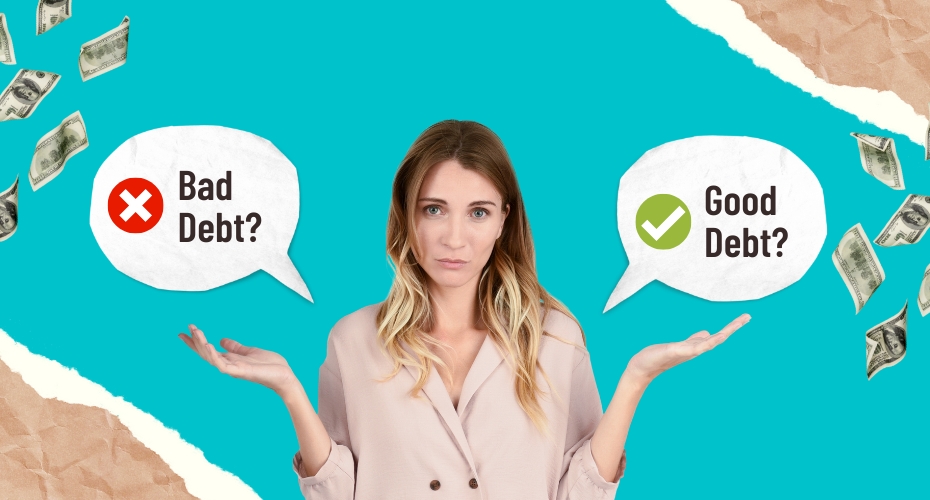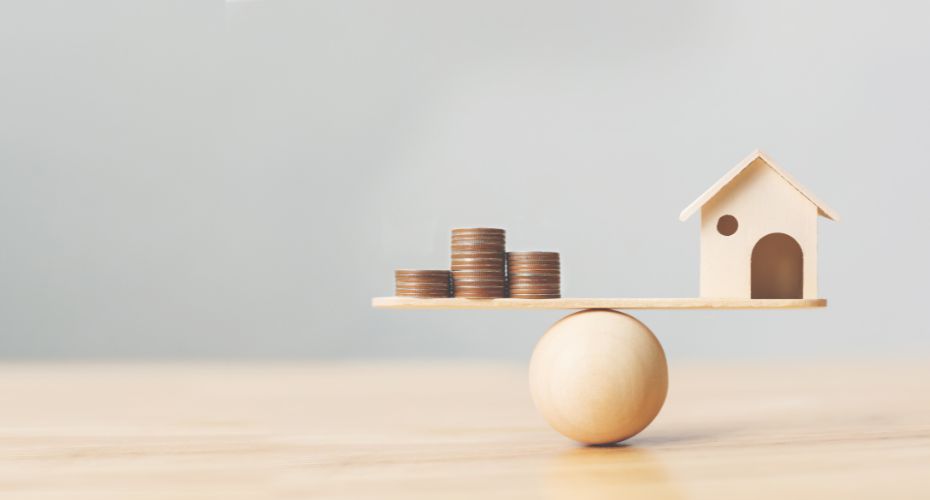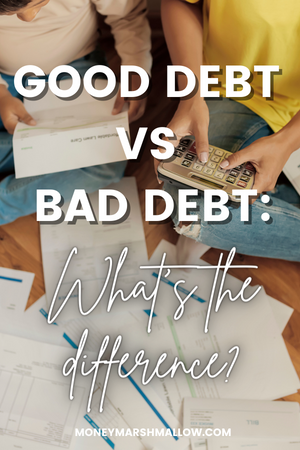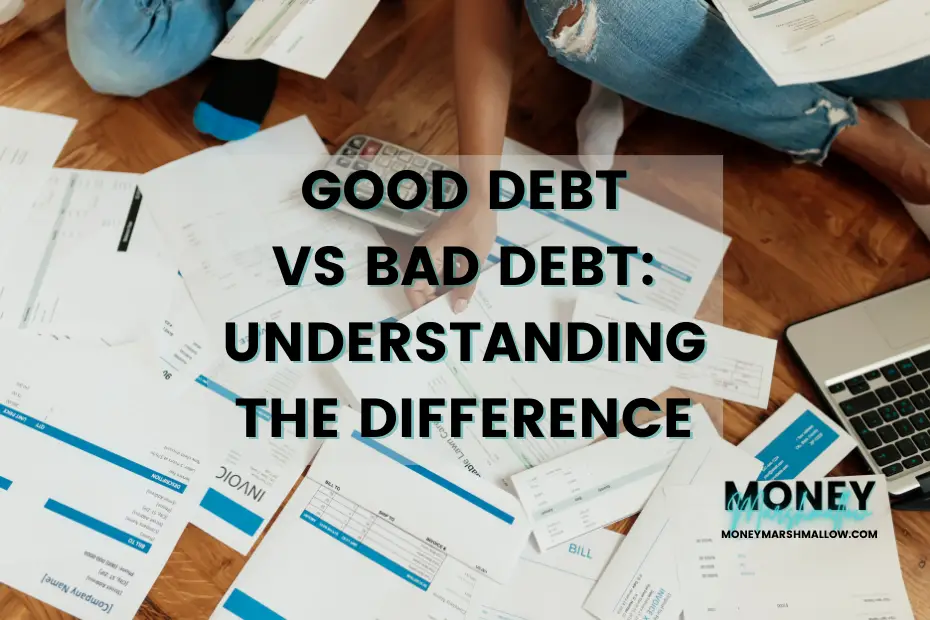Debt is a necessary tool in many people’s financial lives. Whether it’s to purchase a home, pay for education, or cover unexpected expenses, taking on debt can help you reach your financial goals.
However, not all debt is created equal. Therefore, it’s important to understand the difference between good debt vs bad debt. In this article, we’ll explore the key differences between good and bad debt, and provide examples of each.
What's the difference between good debt and bad debt?
Good debt is debt that helps you make a wise investment for your future. This can be debt such as a mortgage on a home or a student loan for education. These types of debts typically have relatively low interest rates and can provide long-term benefits that outweigh the short-term costs.
Bad debt, on the other hand, is debt that provides no long-term benefits. This can be credit card debt or personal loans used to make unnecessary purchases. These debts often have high interest rates, making it more difficult to pay off the balance. This means they can easily spiral out of control.
What is an example of good debt?
Good debt can be a loan used to finance something that will offer a good return on the investment. Here are some more detailed examples of good debt:
Student loans: Taking out a student loan to finance a university education can be considered good debt. It provides a long-term benefits in the form of a higher earning potential and a better standard of living. The interest rates on student loans are also often lower than other forms of debt.
Mortgages: Getting a mortgage to buy a primary residence can be considered good debt. Home is often a long-term investment that has the potential to appreciate in value over time. Additionally, the monthly payments on a mortgage can be used as a form of savings; each payment contributes to building equity in the home.
Business loans: Taking out a loan to start or expand a business can be considered good debt if the business has a high chance of success and generates enough revenue to pay back the loan with interest.
Investment loans: A loan to purchase investments, such as rental property, can be considered good debt if the investments generate a return that is higher than the interest rate on the loan.
It’s important to note that while these debts may be considered good, they still require careful consideration and planning. Make sure you use them in a way that benefits your long-term financial goals.

What is an example of bad debt?
Bad debt is typically used to pay for things that lose value over time and don’t contribute to your income. Here are some more specific examples of bad debt:
Credit card debt: Credit card debt is considered bad debt because of the high interest rates. It’s also easy to rack up credit card debt for purchases that provide no long-term benefits. Buy Now, Pay Later debt also falls in this category of bad debt.
Personal loans: Personal loans used to finance non-essential expenses, such as festivals, holidays or weddings expenses, are considered bad debt. These loans don’t tend to offer any lasting advantages and often come with exorbitant interest rates.
Payday loans: Payday loans are often considered bad debts due to their high interest rates. They are often also marketed to those with limited access to traditional forms of credit. The high interest rates and short repayment terms can make it difficult to pay off the loan. This can then lead to a cycle of debt.
Car loans for expensive vehicles: Taking out a loan to purchase a luxury or high-end vehicle is often considered bad debt. The vehicle often quickly depreciates in value and provides no long-term financial benefits.
It’s important to remember that bad debt can have a negative impact on your credit score and financial stability. Hence, it’s crucial to minimise or avoid it when possible.
Related: Child Benefit Loan: What you need to know about family loans
Is mortgage good or bad debt?
Although a mortgage for your own home is often considered good debt, the topic can be debatable. Whether a mortgage is considered good debt or bad debt is a matter of perspective. Here are some arguments for both sides:
Good debt:
- A mortgage allows you to own a home, which is a long-term investment that has the potential to appreciate in value over time.
- A mortgage can also be considered good debt because the interest rates are generally lower than other forms of debt. This makes it easier to repay the mortgage over the long term.
Bad debt:
- A mortgage requires a large commitment of funds, which can limit your financial flexibility and prevent you from using your money for other investments or purposes.
- If the value of your home decreases, you may end up owing more on your mortgage than the property is worth, which can be a financial burden.
- The long repayment term of a mortgage, usually around 25 years, can mean you are paying interest for a long time. Therefore, the overall cost of the debt can be higher.
Ultimately, whether a mortgage is considered good debt vs. bad debt depends on your personal financial situation, goals, and the terms of your mortgage. It’s important to consider all of the factors involved and consult with a financial advisor if you have any concerns.

When can you say a debt is good or bad?
A debt can be considered good vs bad based on several factors. These factors include things such as:
Interest rate: A lower interest rate is preferable for good debt as it means lower overall costs.
Long-term benefits: Good debt should provide benefits in the long run, such as appreciation in value or an increase in income.
Ability to pay off the balance: Good debt should be manageable and payable within a reasonable amount of time.
Purpose: Good debt is often taken on for investments that have the potential to increase in value, such as education or real estate. Bad debt is often taken on for non-essential or frivolous purchases.
Cost-benefit ratio: Good debt should have a positive cost-benefit ratio, where the benefits outweigh the costs.
Impact on financial flexibility: Good debt should not impede financial flexibility and stability.
With this in mind, you can often recognise good debt if it: has a low interest rate, provides long-term benefits, and can be paid off in a timely manner.
If a debt has a high interest rate, provides no long-term benefits, and is difficult to pay off, it’s likely to be considered bad debt.
How do you turn bad debt into good debt?
To turn bad debt into “good debt”, you will need to pay off high-interest debt first and re-evaluate your debt use. Here are some ways that can help you manage your bad debt:
Refinance: Refinancing high-interest debt, such as credit card debt or personal loans, with a lower-interest loan or line of credit, can reduce the amount of interest you pay. This makes it easier to pay off the debt.
Transfer balances: Transferring balances from high-interest credit cards to a card with a lower interest rate can help you save on interest and make it easier to pay off the debt.
Consolidate debt: Consolidating multiple debts into one loan with a lower interest rate can make it easier to manage your debts and reduce the amount of interest you pay.
Implement a budget: Setting a budget can help you reduce your spending and increase your ability to pay off debt. When you combine it with a smart debt repayment plan, you can work your way out of debt while avoiding more financial troubles. If you have credit card debt, consider using a payment calculator to figure out how to pay it off within your budget.
Increase income: Increasing your income through a job change, taking on a side gig, or starting a business can help you pay off debt faster. Higher income should also help you reduce the risk of incurring more bad debt in the future.
It’s important to keep in mind that turning bad debt into good debt requires discipline and a commitment to change your spending and saving habits. It may take time, but the long-term benefits to your financial health make it a worthwhile investment.
Making smart debt decisions
Debt is always a significant financial decision. Therefore, understanding the difference between good debt vs bad debt is crucial in making informed financial decisions.
Good debt includes investments that appreciate in value and have lower interest rates. In contrast, bad debt includes high costs, limits financial flexibility, and may result in owing more than the investment’s worth.
It’s important to consider personal financial goals and consult with a financial advisor when in doubt. Making smart choices about debt can help secure a stable financial future.

